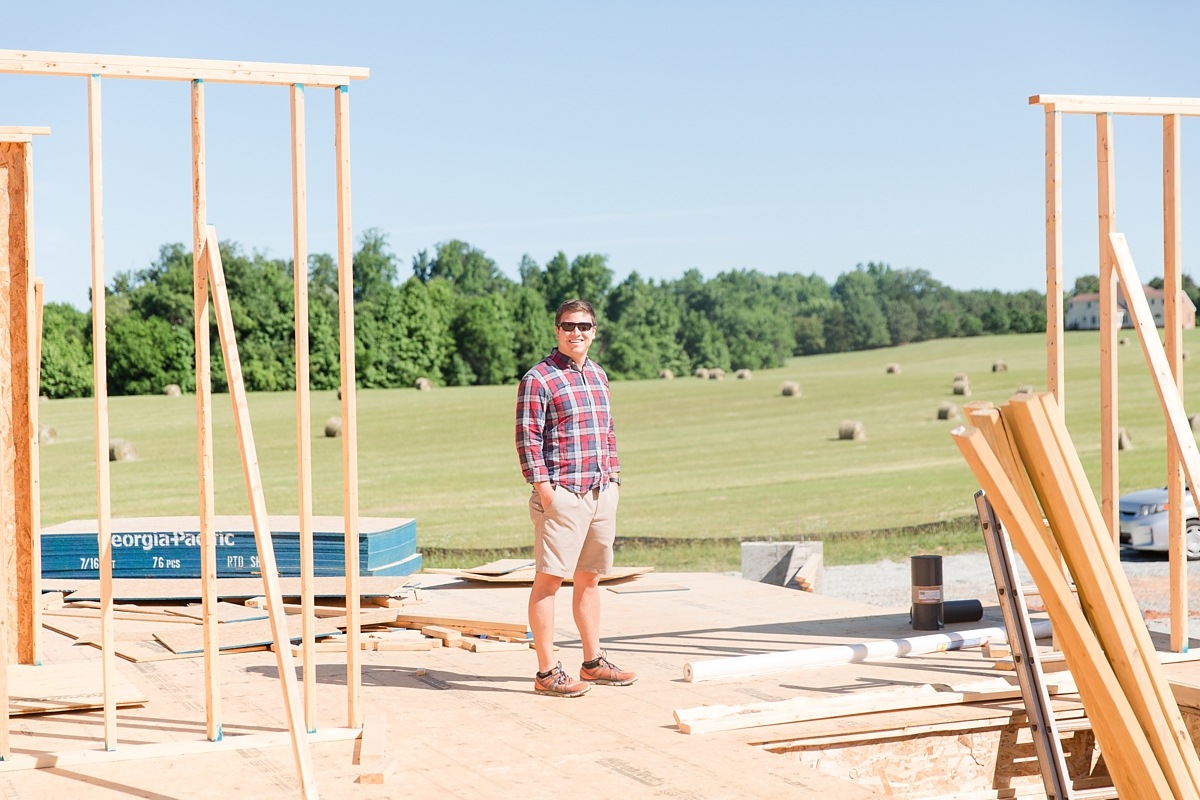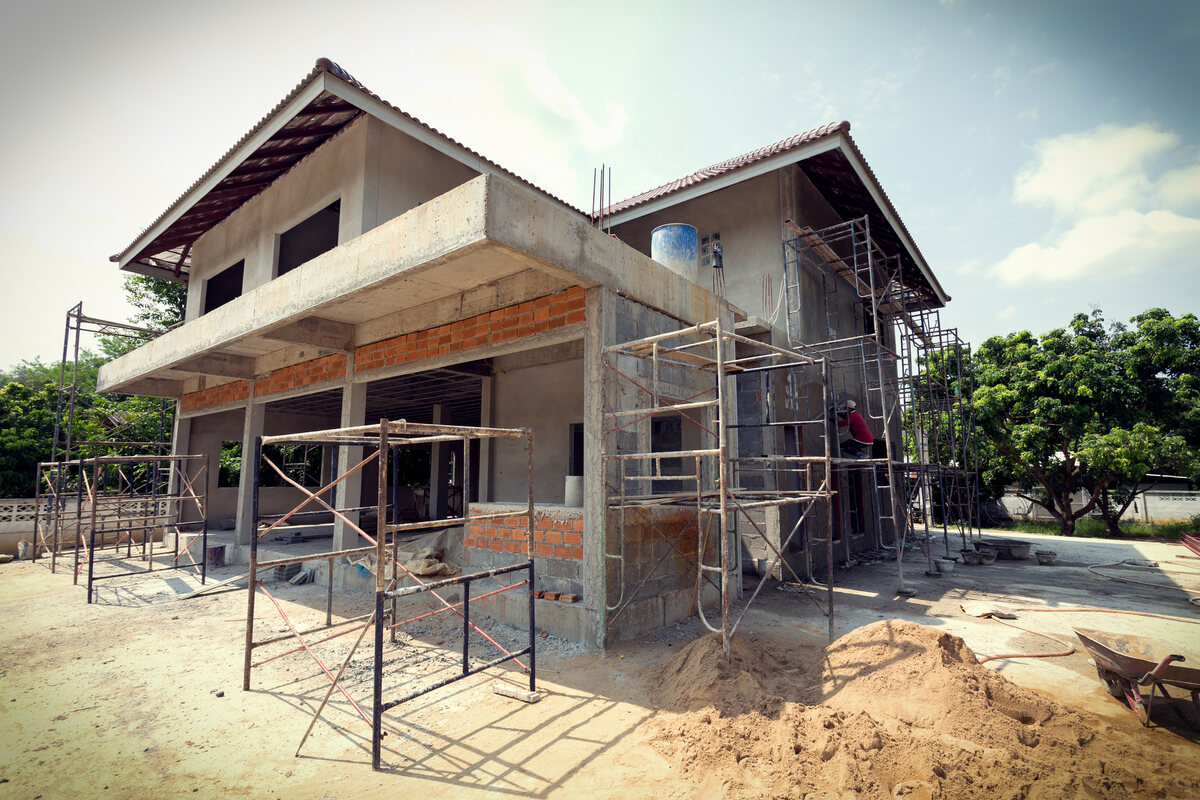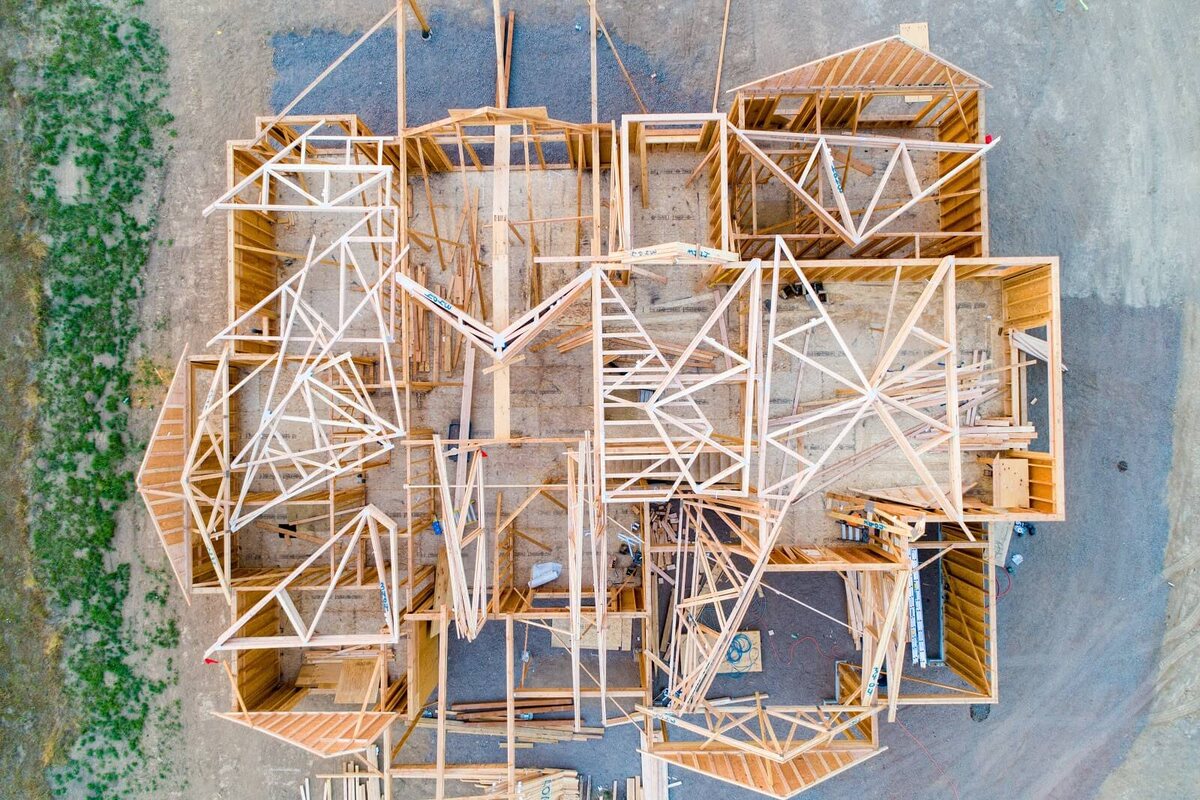Home>diy>Building & Construction>What Project Management Methodology Would Work Best For Building A House?


Building & Construction
What Project Management Methodology Would Work Best For Building A House?
Modified: January 24, 2024
Discover the most suitable project management methodology for building your dream house. Gain insights on the best practices for efficient building construction.
(Many of the links in this article redirect to a specific reviewed product. Your purchase of these products through affiliate links helps to generate commission for Storables.com, at no extra cost. Learn more)
Introduction
Welcome to the world of project management in the construction industry! Building a house is an intricate process that requires careful planning, organization, and coordination of various tasks and resources. To ensure a successful construction project, it is crucial to choose the right project management methodology that aligns with the unique requirements of building construction.
In this article, we will explore different project management methodologies and their applicability to building a house. We will dive into traditional project management, agile project management, waterfall project management, scrum project management, critical path method (CPM), and lean project management. By understanding the characteristics, benefits, and drawbacks of each methodology, you will be equipped with the knowledge to make an informed decision for your construction project.
So, let’s embark on this journey to discover the most suitable project management methodology for building your dream house!
Key Takeaways:
- Choose the Right Methodology: Traditional, Agile, or Lean
Select a project management methodology based on the specific needs of your house construction project. Traditional, agile, and lean methodologies offer unique benefits and drawbacks, so make an informed decision to ensure successful delivery. - Embrace Flexibility and Collaboration with Agile and Scrum
For house construction projects with evolving requirements and high client involvement, consider agile and scrum methodologies. Embrace adaptability, frequent communication, and iterative development to deliver a house that meets evolving needs and ensures client satisfaction.
Traditional Project Management Methodology
Traditional project management is a tried-and-true methodology that has been widely used in the construction industry for decades. It follows a structured and sequential approach to project management, focusing on planning, executing, and controlling each phase of the project. Let’s delve into the key aspects of traditional project management:
Definition
Traditional project management, also known as the waterfall methodology, is characterized by a linear and hierarchical project structure. It involves detailed upfront planning and a well-defined scope, with a clear distinction between each stage of the project.
Phases and processes
In the traditional project management methodology, the construction project is divided into distinct phases, including initiation, planning, execution, monitoring and control, and project closure. Each phase has specific processes and deliverables that need to be completed before moving on to the next.
In the initiation phase, project objectives and stakeholders’ requirements are identified. The planning phase involves creating a comprehensive project plan, defining tasks, allocating resources, and estimating timelines and costs.
During the execution phase, the construction activities are carried out based on the predefined plan. The monitoring and control phase involves tracking progress, managing changes, and ensuring that the project stays on track. Finally, the project closure phase includes finalizing documentation, conducting inspections, and handing over the completed house to the owner.
Benefits and drawbacks
One of the significant advantages of traditional project management is its emphasis on thorough planning and documentation. This methodology provides a clear roadmap and a structured framework for managing the project from start to finish.
However, the rigid nature of traditional project management can be a drawback in the fast-paced construction industry. The linear progression of tasks may not account for unexpected changes or challenges that arise during the construction process.
Applicability to building a house
The traditional project management methodology is well-suited for building a house when the scope and requirements are well-defined, and there is little room for flexibility or changes in the construction plan. It works best for small to medium-sized construction projects with predictable timelines and limited complexity.
When building a house, traditional project management ensures that all the necessary steps, such as obtaining permits, securing financing, and coordinating contractors and suppliers, are meticulously planned and executed. It provides a systematic approach to managing resources, tracking progress, and delivering the project on schedule.
However, it’s important to note that in the construction industry, unforeseen circumstances and changing client requirements are not uncommon. In such cases, a more flexible project management methodology may be more suitable to accommodate changes and adapt to evolving needs.
Agile Project Management Methodology
Agile project management is a modern and flexible approach that emphasizes collaboration, adaptability, and iterative development. It is well-suited for complex and dynamic projects where requirements may evolve throughout the construction process. Let’s explore the key aspects of agile project management:
Definition
Agile project management is a methodology that focuses on delivering value to the customer through continuous collaboration and feedback. It encourages cross-functional teams to work together in short iterations, known as sprints, to produce incremental and tangible results.
Principles and values
The agile methodology is based on the principles outlined in the Agile Manifesto, which values individuals and interactions, working solutions, customer collaboration, and responding to change. It promotes adaptive planning, continuous improvement, and delivering high-quality work in a timely manner.
Benefits and drawbacks
One of the major benefits of agile project management is its ability to accommodate changes and respond quickly to evolving client requirements. It allows for frequent communication and collaboration between stakeholders, ensuring that the construction project aligns with the client’s vision.
Agile project management also promotes transparency and accountability, as progress is regularly reviewed and evaluated during sprint meetings. This enables timely identification of issues or risks, leading to faster resolution and improved project outcomes.
However, the flexibility of agile project management can be a double-edged sword. Without proper planning and control, the project may be subject to scope creep, where additional requirements are continuously added throughout the construction process. This can potentially lead to delays and budget overruns if not managed effectively.
Applicability to building a house
The agile project management methodology can be beneficial when building a house, especially in situations where the client’s requirements are likely to change or evolve over time. It allows for more frequent communication and collaboration with the homeowner, ensuring that their vision is accurately captured and implemented.
By breaking the construction project into small, manageable sprints, agile project management enables more efficient planning and execution of tasks. It promotes flexibility and adaptability, allowing for adjustments to the construction plan as needed, based on real-time feedback and emerging priorities.
It is important to note that agile project management may not be as suitable for large-scale construction projects with rigid timelines and strict budgets. The collaborative and iterative nature of agile may require more frequent decision-making and approvals, which can potentially slow down the construction process in certain cases.
In summary, the agile project management methodology offers a customer-centric and adaptive approach to building a house. Its focus on collaboration and flexibility can lead to increased client satisfaction and improved project outcomes when applied appropriately.
Waterfall Project Management Methodology
The waterfall project management methodology is a traditional and linear approach to project management. It follows a sequential process, where each phase is completed before moving on to the next. Let’s explore the key aspects of waterfall project management:
Definition
Waterfall project management is a structured methodology where projects progress in a linear and predetermined fashion. Each phase of the project is completed before moving on to the next, with minimal flexibility or room for changes once a phase has begun.
Read more: What Is A Passive House Building
Sequential approach
In the waterfall methodology, the construction project progresses through distinct phases, including requirements gathering, design, implementation, testing, and deployment. Each phase is typically completed before the next one begins, with minimal overlap or iteration.
The project moves forward in a sequential manner, similar to a waterfall flowing downwards, hence the name. This approach assumes that all requirements and specifications can be clearly defined upfront and that any changes can be managed through change control procedures.
Benefits and drawbacks
One of the key benefits of the waterfall project management methodology is its structured and predictable nature. It allows for clear planning and enables stakeholders to have a thorough understanding of the project requirements and deliverables upfront.
Additionally, the linear progression of tasks in waterfall project management makes it easier to manage and allocate resources. This methodology is well-suited for projects with fixed timelines and budgets, where requirements are unlikely to change significantly during the construction process.
However, one of the drawbacks of the waterfall methodology is its limited flexibility. Once a phase is completed, it can be difficult and time-consuming to make changes or accommodate new requirements.
Moreover, the waterfall methodology may not account for potential risks or challenges that emerge later in the project. If issues arise during the construction process, it may be challenging to make adjustments without impacting the overall timeline and budget.
Applicability to building a house
The waterfall project management methodology can be suitable for building a house when the requirements and scope are well-defined and unlikely to change significantly throughout the project. It is commonly used in construction projects with a clear plan and where stakeholder expectations are stable.
In the context of building a house, the waterfall methodology ensures a systematic approach to the sequential tasks required for construction, such as obtaining permits, site preparation, foundation, framing, electrical and plumbing installations, finishing, and final inspections.
However, it is important to note that the waterfall methodology may not be ideal for complex or customized projects where requirements may evolve or change during the construction process. In such cases, a more flexible methodology, like agile or lean, may be more suitable to accommodate those changes and adapt to evolving needs.
Ultimately, the choice of project management methodology should align with the specific requirements, constraints, and objectives of the construction project to ensure successful delivery and client satisfaction.
Scrum Project Management Methodology
The scrum project management methodology is an agile approach that emphasizes teamwork, collaboration, and iterative development. It is well-suited for complex projects where requirements may change during the construction process. Let’s explore the key aspects of the scrum project management methodology:
Definition
Scrum is a project management methodology that focuses on delivering value through incremental and iterative development. It incorporates the principles of transparency, inspection, and adaptation to enable effective teamwork and continuous improvement.
Roles and responsibilities
In scrum, there are three main roles: the product owner, the scrum master, and the development team. The product owner represents the interests of the stakeholders and ensures that the project goals are communicated and prioritized. The scrum master serves as a facilitator, ensuring that the scrum framework is followed and removing any obstacles that may hinder the team’s progress. The development team consists of individuals with the necessary skills to deliver the project’s requirements.
The scrum framework also includes ceremonies, such as daily stand-up meetings, sprint planning meetings, sprint reviews, and sprint retrospectives. These ceremonies facilitate effective communication, collaboration, and decision-making within the team.
Benefits and drawbacks
One of the major benefits of the scrum project management methodology is its ability to adapt to changing requirements. It allows for flexibility and encourages regular feedback and collaboration with stakeholders, ensuring that their evolving needs and expectations are met. The iterative nature of the methodology enables early detection of issues, reduces risks, and promotes continuous improvement throughout the construction process.
The scrum methodology also promotes transparency and accountability. Daily stand-up meetings and regular product demonstrations allow for frequent inspection and evaluation of progress, ensuring that the project stays on track and meets the clients’ expectations.
However, the success of the scrum methodology heavily relies on effective communication and collaboration within the team. If team members are not committed or lack the necessary skills, it can hinder the project’s progress and overall success.
Applicability to building a house
The scrum project management methodology can be beneficial when building a house, especially in scenarios where the requirements may evolve during the construction process or when clients are actively involved in decision-making.
By breaking down the project into smaller iterations, known as sprints, and focusing on delivering incremental value, scrum allows for better adaptability to changing client needs and market conditions. It facilitates collaboration and communication between the construction team, the client, and other stakeholders, ensuring that everyone is aligned and working towards the same goals.
Scrum also enables the construction team to address any challenges or issues more quickly, as they are identified and discussed during the regular sprint review and retrospective meetings. This promotes continuous improvement and ensures that the construction project remains on track and delivers the desired outcome.
It’s important to note that the scrum methodology may not be suitable for all construction projects. Projects with fixed budgets, strict timelines, or a well-defined scope may benefit more from a traditional project management approach. It is essential to consider the unique characteristics of each construction project before deciding on the most suitable project management methodology to adopt.
Critical Path Method (CPM)
The Critical Path Method (CPM) is a project management technique used to identify the sequence of activities that are crucial for completing a project on time. It enables construction professionals to understand the dependencies between tasks, estimate project duration, and manage resources effectively. Let’s delve into the key aspects of the Critical Path Method:
Definition
The Critical Path Method (CPM) is a project scheduling technique that identifies the critical activities in a project and determines the longest path, or sequence of activities, required to complete the project. It helps project managers identify the activities that must be completed on time to prevent delays in the project’s overall timeline.
Project scheduling and timeline
In the CPM technique, each activity is assigned a specific duration and is linked to its immediate predecessors and successors based on their dependencies. By analyzing these interdependencies, a network diagram, known as the PERT (Program Evaluation and Review Technique) chart, is created.
The CPM technique identifies the critical path, which represents the sequence of activities that have no float or slack time – meaning any delays in these activities will result in a delay in the overall project completion date. By analyzing the critical path, project managers can determine the project’s expected duration and allocate resources accordingly.
Benefits and drawbacks
The Critical Path Method offers several benefits to construction projects. It provides project managers with a clear understanding of the project’s timeline, allowing them to allocate resources effectively. By identifying the critical path, managers can focus their efforts on activities that are crucial to the project’s success and ensure they are completed on time.
CPM is valuable for managing complex construction projects, as it enables project managers to identify potential bottlenecks and critical activities that could cause delays. By understanding the critical path, project managers can make informed decisions and prioritize tasks to maintain the project’s schedule.
However, the CPM technique also has limitations. It assumes that all activities have deterministic durations, meaning the time required for each activity is fixed and predictable. In reality, construction projects are subject to uncertainties and unforeseen events that can impact the duration of tasks. Additionally, external factors, such as weather conditions, may also affect the project timeline, which cannot be accounted for solely by the CPM technique.
Applicability to building a house
The Critical Path Method is highly applicable to building a house. It helps construction professionals create a detailed project schedule, allocate resources effectively, and ensure timely completion of the house.
By identifying the critical path, construction project managers can prioritize the activities that are vital to finishing the house on time. For example, activities like site preparation, foundation, framing, electrical and plumbing installations, and finishing work can be carefully scheduled to optimize the overall construction timeline.
The CPM technique also allows project managers to monitor progress and make informed decisions. If any activities on the critical path are delayed, project managers can take immediate action to mitigate the impact on the project’s completion date. This may involve reallocating resources, adjusting schedules, or expediting certain tasks.
It’s worth noting that the accuracy and reliability of the CPM technique depend on the accuracy of the initial estimates and assumptions made during the planning phase. Therefore, it is crucial for project managers to regularly update and adjust the project schedule as the construction project progresses and more accurate data becomes available.
In summary, the Critical Path Method offers construction professionals a systematic approach to project scheduling and resource allocation. It provides insights into the sequencing of activities and reduces the risk of delays, ultimately contributing to the successful and timely completion of a house construction project.
Lean Project Management Methodology
The Lean project management methodology is centered around efficiency, eliminating waste, and continuous improvement. It aims to deliver value to customers while minimizing resources and maximizing productivity. Let’s explore the key aspects of the Lean project management methodology:
Definition
Lean project management is a methodology that originated from the manufacturing industry and has been adapted for various sectors, including construction. It focuses on creating value for customers by optimizing processes, reducing waste, and empowering collaboration and continuous improvement.
Key principles
The Lean project management methodology is guided by several key principles:
- Value: Identifying and understanding what value means to the customer and aligning project activities to deliver that value.
- Waste elimination: Identifying and eliminating activities or processes that do not add value to the project, such as unnecessary delays, rework, or waiting time.
- Flow: Ensuring a smooth flow of work and materials by eliminating bottlenecks and optimizing the movement of resources.
- Pull: Focusing on customer demand and actively responding to it, rather than pushing work through the system without regard to customer needs.
- Continuous improvement: Encouraging a culture of learning and improvement, where teams constantly seek ways to enhance processes, eliminate waste, and deliver higher value to customers.
Benefits and drawbacks
The Lean project management methodology offers several benefits to construction projects. By removing waste and optimizing processes, it increases efficiency and productivity, resulting in cost savings and shorter project durations. It also improves quality by focusing on adding value and reducing errors or rework.
Lean project management enables better collaboration and communication among project teams and stakeholders. It encourages a culture of transparency and mutual respect, leading to improved teamwork and problem-solving. Additionally, the methodology stimulates innovation and creativity by empowering individuals to bring forward ideas for process improvement.
However, the Lean project management methodology may have some challenges. It requires a shift in mindset and may not be embraced by all team members initially. It may also require additional effort and time to properly implement Lean techniques and maintain continuous improvement practices.
Applicability to building a house
The Lean project management methodology is applicable to building a house, particularly in streamlining construction processes and maximizing value for homeowners. It enables construction professionals to identify and eliminate waste, resulting in improved efficiency and reduced costs.
Lean principles can be applied to various aspects of house construction, such as material procurement, job site organization, and task sequencing. By creating a smooth flow of materials, minimizing delays, and optimizing work processes, construction projects can be completed more efficiently and with higher quality.
Lean project management also promotes collaboration and teamwork, allowing construction teams to work together to identify process bottlenecks and find innovative solutions. This methodology emphasizes active engagement from all project stakeholders, including homeowners, architects, contractors, and suppliers, fostering a culture of continuous improvement and customer satisfaction.
However, it’s important to recognize that the Lean project management methodology may not fit all construction projects. Large-scale projects with complex requirements or highly regulated environments may face challenges in implementing Lean principles. Therefore, it is essential to assess and adapt the Lean methodology to the specific needs and constraints of each house construction project.
In summary, the Lean project management methodology offers construction professionals a systematic approach to improving efficiency, reducing waste, and maximizing value in the process of building a house. By eliminating waste and fostering collaboration, Lean enables the delivery of high-quality projects in a cost-effective and timely manner.
Conclusion
Project management methodologies play a critical role in the successful completion of construction projects. Each methodology has its own unique characteristics, benefits, and drawbacks that make it suitable for different situations. When it comes to building a house, choosing the right project management methodology is crucial to ensure efficient planning, resource allocation, and timely delivery.
The traditional project management methodology, also known as the waterfall methodology, offers a structured and sequential approach to project management. It is well-suited for smaller construction projects with well-defined scopes and limited flexibility. However, it may not be suitable for projects with changing requirements or complex timelines.
Agile project management provides a flexible and collaborative approach, allowing for adaptability and feedback throughout the construction process. It is beneficial for projects where requirements may evolve, and customer involvement is crucial. However, it may require more frequent decision-making and approvals, which can impact the overall project timeline.
The Critical Path Method (CPM) enables project managers to identify the critical activities and dependencies in construction projects. It helps with efficient scheduling and resource allocation, minimizing delays and ensuring timely completion. However, it relies on accurate initial estimates and may not account for uncertainties or external factors that can impact the project timeline.
Scrum project management, part of the agile methodology, promotes collaboration, iterative development, and continuous improvement. It is effective when requirements are likely to change, and customer involvement is high. However, it requires effective team communication and commitment to be successful in implementing the methodology.
Lean project management focuses on efficiency, waste elimination, and continuous improvement. It can streamline construction processes, reduce costs, and improve quality. However, its application may vary depending on the specific characteristics of each construction project, and it requires a shift in mindset and continuous effort to maintain Lean practices.
In conclusion, the choice of project management methodology for building a house depends on various factors such as project size, complexity, client involvement, and flexibility requirements. It is crucial to assess these factors and choose the most suitable methodology that aligns with the project’s specific needs and goals.
Regardless of the methodology chosen, effective project management is essential for the successful completion of a construction project. By utilizing the right project management approach and employing skilled professionals, construction projects can be executed efficiently, within budget, and to the satisfaction of all stakeholders involved.
Frequently Asked Questions about What Project Management Methodology Would Work Best For Building A House?
Was this page helpful?
At Storables.com, we guarantee accurate and reliable information. Our content, validated by Expert Board Contributors, is crafted following stringent Editorial Policies. We're committed to providing you with well-researched, expert-backed insights for all your informational needs.









0 thoughts on “What Project Management Methodology Would Work Best For Building A House?”